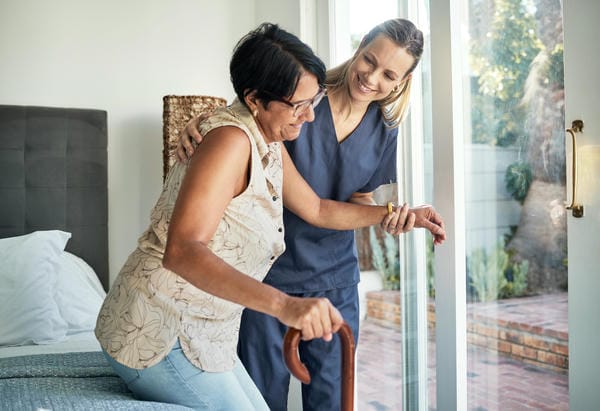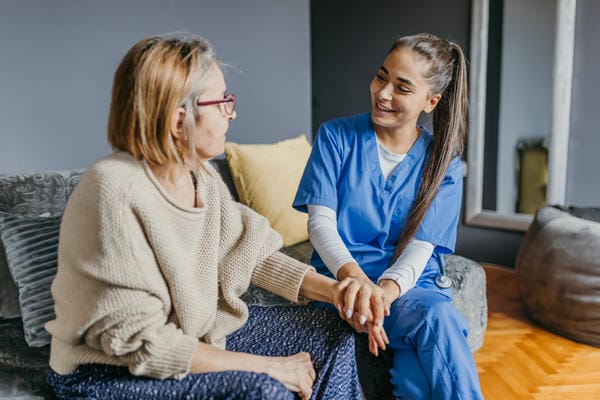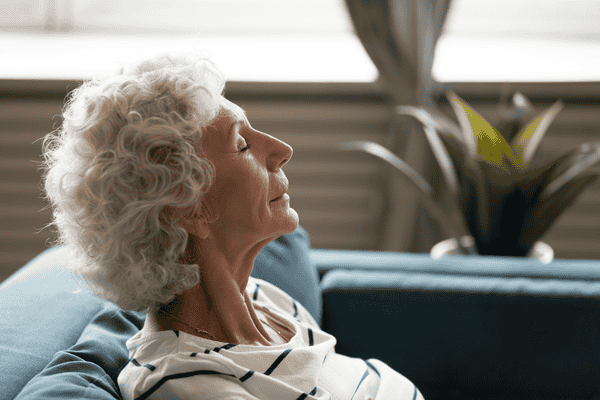When Mary Jenkins, 78, returned home after her hip replacement surgery, she felt overwhelmed by the list of wound care instructions. “The hospital gave me this packet with so many steps and warnings,” she told me during our follow-up consultation. “I was afraid I’d do something wrong and end up back in the hospital.”
Mary’s concerns aren’t unusual. Postoperative wound care for older adults presents unique challenges that require special attention and understanding. As we age, our bodies heal differently, and the standard approaches to wound management often need thoughtful adaptation.
Understanding Age-Related Changes That Impact Wound Healing
Aging brings physiological changes that directly influence how wounds heal. The skin thins significantly, with older adults having approximately 20% thinner dermal layers than younger individuals. Blood vessels become more fragile, and circulation diminishes, particularly in the extremities where many surgical procedures occur.
“The healing cascade simply works more slowly in older bodies,” explains Dr. Sarah Thompson, a geriatric wound care specialist I’ve collaborated with for over a decade. “What might take a week in a 40-year-old could require two or three weeks in someone over 75.”
These natural changes coincide with common health conditions in the elderly population that further complicate wound healing. Diabetes affects approximately 26% of Americans over 65, compromising circulation and immune function. Cardiovascular diseases reduce blood flow to healing tissues, while medications like steroids and blood thinners can interfere with normal healing processes.
Assessment: The Foundation of Effective Wound Care
Successful wound management begins with thorough assessment. Unlike younger patients, older adults may present with subtle signs of wound complications that require a trained eye to detect.
When evaluating a postoperative wound in an older adult, caregivers should document several key elements:
Wound appearance goes beyond simple measurements. The color of the wound bed provides crucial information—healthy granulation tissue appears bright red, while yellow slough or black eschar indicates tissue that isn’t healing properly. Wound edges should gradually come together; undermining or rolled edges suggest healing problems.
Exudate characteristics tell an important story as well. Moderate, clear drainage typically indicates normal healing, while increasing amounts or changes in color and consistency may signal infection. The surrounding skin deserves equal attention—the zone extending 4 cm around the wound often provides the earliest warning signs of developing complications.
“I teach my nursing students to use all their senses when assessing elderly wounds,” says clinical instructor Rebecca Martinez. “The smell, the temperature of the surrounding skin, even the patient’s facial expressions during dressing changes—these observations often catch problems before they become obvious.”
Infection Control: Heightened Vigilance Required
The immune system gradually weakens with age, making infection prevention paramount for older surgical patients. Even mild infections can quickly escalate in this population, threatening not just the wound but overall health.
Hand hygiene remains the single most effective measure for preventing surgical site infections. Anyone involved in wound care should perform thorough hand washing before and after dressing changes, even when gloves are used. Creating a clean field for dressing supplies helps maintain aseptic technique in home settings.
Temperature monitoring provides an early warning system for developing infections. A rise of even one degree above the patient’s baseline warrants attention, as older adults often don’t mount the same febrile responses as younger patients. Family members or caregivers should be taught to check temperature daily during the first week after surgery.
Wound Dressing Selection: Art Meets Science
Choosing the right dressing for an elderly patient involves balancing multiple factors—the wound’s characteristics, the patient’s skin condition, ease of application, and cost considerations.
“Twenty years ago, we had maybe five dressing options,” reflects wound care nurse James Miller. “Today, we have hundreds of specialized products, which is wonderful but can also be overwhelming for patients and caregivers to navigate.”
Hydrocolloid dressings create an ideal moist healing environment and protect fragile skin, making them suitable for many clean, postoperative wounds in older adults. Their adhesive properties, however, require careful application and removal to prevent skin tears.
Foam dressings excel at managing moderate exudate while providing cushioning for painful wounds. Their non-adherent nature makes them particularly valuable for elderly patients with fragile skin.
Antimicrobial dressings containing silver or honey may be appropriate when infection risk is high, though they should be used judiciously rather than as a standard approach. These specialized dressings typically cost more and may not be covered by insurance for long-term use.
The frequency of dressing changes deserves thoughtful consideration. While younger patients might tolerate daily changes, older adults often benefit from less frequent disruption, allowing their wounds to maintain optimal healing conditions and minimizing stress on fragile skin during adhesive removal.
Pain Management: Critical for Healing and Mobility
Uncontrolled pain creates a cascade of negative effects that directly impair wound healing. Pain triggers stress responses, elevating cortisol levels that suppress immune function and increasing blood glucose, which can complicate healing, especially in diabetic patients.
Timing pain medication 30-45 minutes before dressing changes can make the process significantly more comfortable. Non-pharmacological approaches like relaxation techniques, gentle music, or simple distraction through conversation can augment pain control efforts.
“Many older patients won’t voluntarily report pain,” cautions geriatric physical therapist David Wong. “They grew up in an era when stoicism was valued, and they often fear becoming dependent on pain medication. We need to actively assess pain rather than waiting for them to tell us.”
Providers should explain that controlling postoperative pain isn’t merely about comfort—it directly enables the mobility necessary for preventing complications and promoting healing. When pain prevents movement, the risk of pressure injuries, pneumonia, and deep vein thrombosis increases substantially.
Nutrition and Hydration: Foundational Elements for Healing
The metabolic demands of wound healing increase caloric needs by 30-50% above baseline. Protein requirements rise dramatically, with research suggesting that surgical patients over 65 may need up to 1.5 grams of protein per kilogram of body weight daily—nearly double normal recommendations.
Dehydration frequently complicates recovery in older adults, who often have diminished thirst sensation and may restrict fluids due to incontinence concerns or mobility limitations. Monitoring for early signs of dehydration—dry mouth, dark urine, or new confusion—can prevent serious complications.
Nutritional supplements designed specifically for wound healing can bridge dietary gaps when appetite is poor. These typically contain concentrated protein, zinc, vitamin C, and other nutrients critical for tissue repair. For patients with significant nutritional deficits, consultation with a dietitian should be considered essential rather than optional.
“I’ve seen poorly healing wounds transform within weeks once we addressed underlying malnutrition,” says home health nurse Sophia Rodriguez. “Sometimes the simplest interventions make the most dramatic difference.”
Mobility and Exercise: Balancing Activity with Wound Protection
Strategic activity planning helps older adults maintain function without compromising their surgical wounds. Physical therapists can design individualized programs that protect the operative site while preventing the muscle atrophy that occurs rapidly in elderly patients during bed rest.
Even patients with lower extremity wounds can perform chair exercises to maintain upper body strength and engage in cardiovascular activity. Regular movement promotes circulation to healing tissues, reduces edema, and prevents many complications of immobility.
When Mr. Harris, 82, was recovering from abdominal surgery, his physical therapist taught him to splint his incision with a small pillow while performing gentle seated exercises. “I was worried about popping my stitches,” he explained, “but once I learned how to support the wound, I felt confident moving again.”
Patient and Caregiver Education: Empowering Successful Home Care
Effective education recognizes the learning needs of older adults, who may process new information more slowly and benefit from multimodal instruction. Written materials should feature large print, simple language, and clear illustrations. Demonstration and return demonstration of wound care techniques allow for correction of misunderstandings before they affect wound outcomes.
Technology can enhance but shouldn’t replace personal instruction. Smartphone photos of the healing wound can enable remote assessment by healthcare providers, helping families determine whether changes warrant immediate attention.
“I always make sure patients understand not just what to do, but why they’re doing it,” explains discharge coordinator Elena Chen. “When people understand the reasoning behind wound care steps, they’re more likely to follow through consistently.”
Monitoring for Complications: Beyond the Wound Itself
While the surgical site naturally draws attention, providers must maintain vigilance for systemic complications that occur more frequently in elderly patients. Deep vein thrombosis, often presenting with subtle symptoms, requires prompt recognition and treatment to prevent potentially fatal pulmonary emboli.
Urinary tract infections develop in approximately 30% of older adults following surgery, especially after procedures requiring catheterization. Confusion or change in mental status may be the only symptom in elderly patients, highlighting the importance of comprehensive assessment rather than focusing exclusively on the wound.
Medication interactions can emerge as new prescriptions for pain or antibiotics combine with existing drug regimens. A comprehensive medication review should occur before discharge and again during follow-up visits to identify potential problems.
Psychosocial Support: Addressing the Whole Person
The psychological impact of surgery and wound care routines can significantly influence healing outcomes. Depression affects up to 40% of older adults following major surgery, yet often goes unrecognized and untreated.
Social isolation frequently compounds recovery challenges. When Mrs. Wilson, 84, struggled with wound healing complications after her mastectomy, further assessment revealed she lived alone and couldn’t properly reach the surgical site to change dressings. Connecting her with a home health aide for brief daily visits resolved the issue and dramatically improved her healing trajectory.
Support groups, whether in-person or online, provide valuable emotional connection for recovering surgical patients. Hearing others’ experiences normalizes the challenges and offers practical strategies for coping with wound care demands.
Integrating Technology into Elderly Wound Care
Technological innovations are transforming wound management for older adults. Smart bandages with embedded sensors can now detect early signs of infection through pH monitoring and temperature changes, potentially alerting providers before visible symptoms develop.
Telehealth platforms enable virtual wound assessments, particularly valuable for patients with transportation challenges or those in rural locations far from wound care specialists. High-resolution cameras on modern smartphones provide sufficient detail for many remote evaluations.
Negative pressure wound therapy, once limited to hospital settings, has evolved into portable, user-friendly systems appropriate for home use. These devices can dramatically accelerate healing in certain wound types by removing excess fluid and promoting granulation tissue formation.
“We’re just beginning to harness technology’s potential for elderly wound care,” notes Dr. Michael Chen, geriatric surgeon. “The ideal approaches combine high-tech monitoring with high-touch care—we need both elements for optimal outcomes.”
Conclusion: The Path Forward
Effective postoperative wound care for older adults requires a personalized approach that considers the unique physiological, psychological, and social factors affecting this population. By understanding age-related changes that impact healing, implementing comprehensive assessment routines, selecting appropriate dressings, managing pain effectively, supporting nutrition and mobility, providing thorough education, monitoring vigilantly for complications, and addressing psychosocial needs, clinicians and caregivers can optimize outcomes for elderly surgical patients.
As our population ages, the demand for specialized wound care knowledge will only increase. Healthcare providers across all settings must develop geriatric-specific skills to meet this growing need. The investment in specialized training and resources pays dividends in preventing complications, reducing hospitalizations, and improving quality of life for older adults recovering from surgery.





